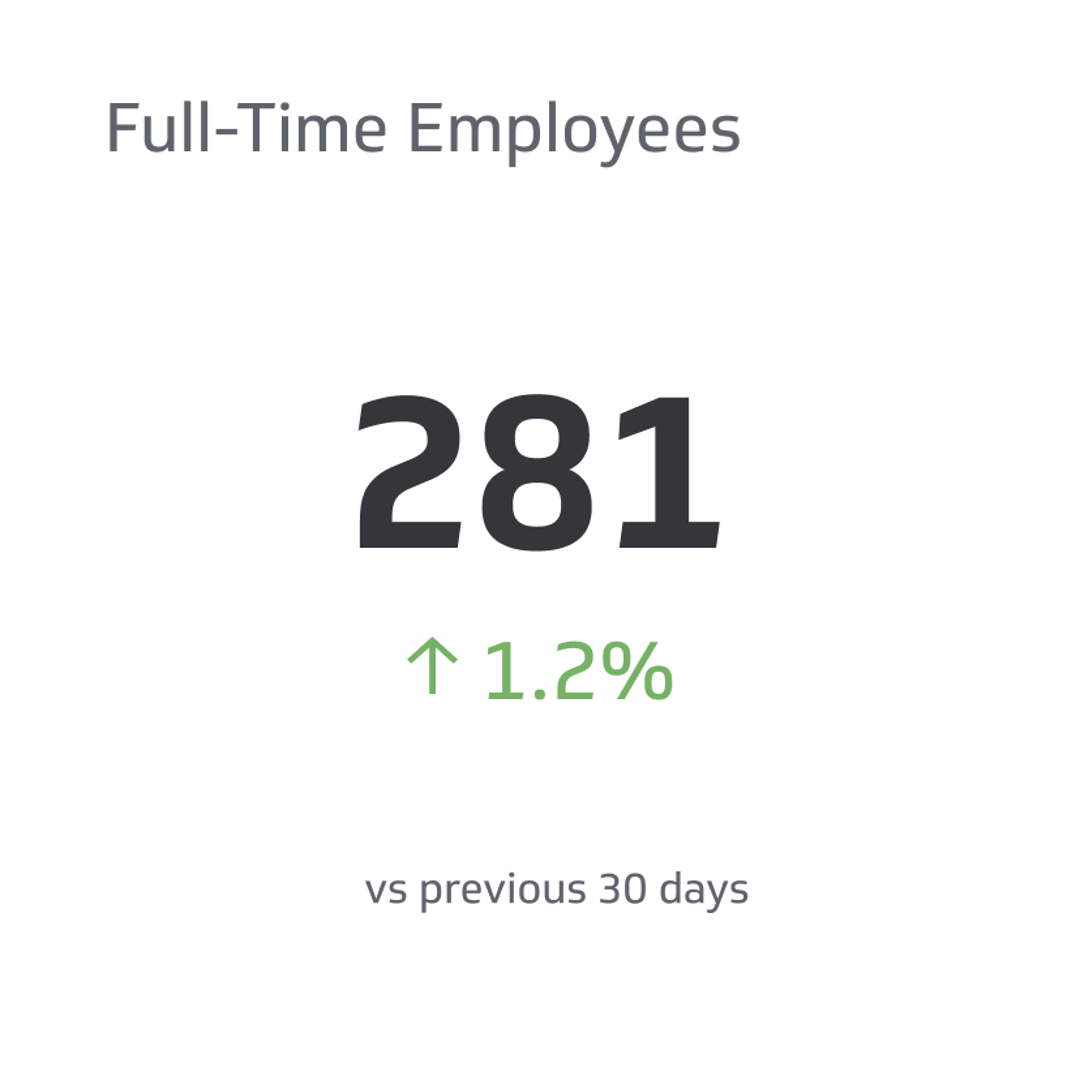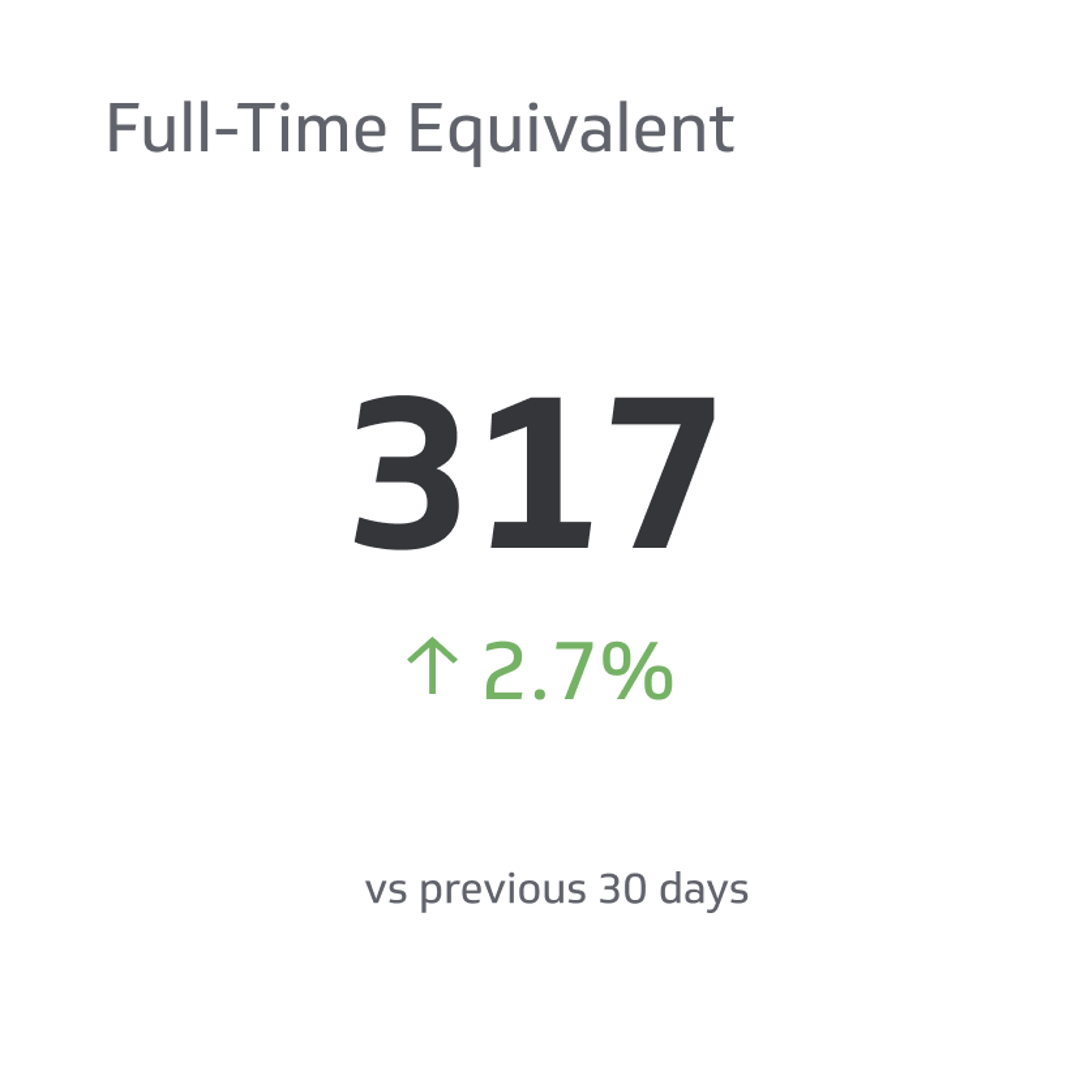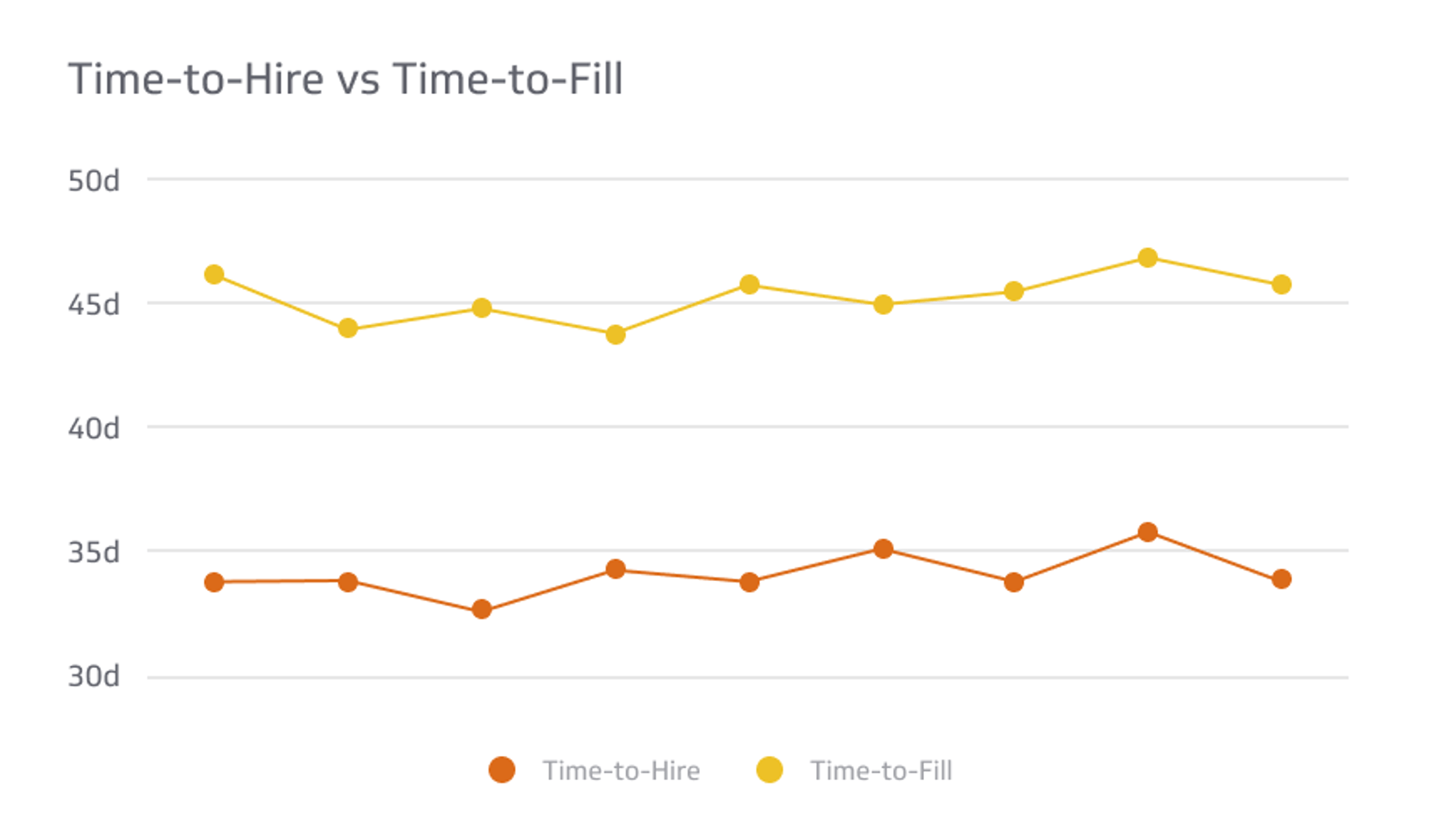Full-Time Employee
Most employers qualify employees as full-time if they fall somewhere between the FMLA and the FSLA requirements.
Track all your HR KPIs in one place
Sign up for free and start making decisions for your business with confidence.

There was a time when the definition of a full-time employee was not confusing. The average workweek was clearly defined, and if an employee met the threshold by putting in that many hours of work in a week, they were full-time.
That definition has migrated over time to mean different things at different times. Even the federal government now has different definitions of “full-time employment.”
Today, the answer to “What is a full-time employee?” is very firm: “It depends.” Here are some general guidelines to help you figure out what full-time employee means to you and your business.
The Old Standard
A federal law never stated a standard for “full-time,” except for a 40-hour-a-week threshold defined in the Fair Labor Standards Act (FLSA.) That Act defined a full-time employee as exceeding 40 hours of work for one employer entity per week. After that, the business was required to pay the employee for overtime, defined in the Act as “time and a half.”
The FSLA standards served as the threshold for just about every public and private sector business. There were a few exceptions, but generally, those applied to the wage paid versus the number of hours worked. For example, a restaurant owner could pay servers less than minimum wage but still had to pay time and a half if a server’s weekly hours exceeded 40.
Most businesses used the FSLA standard as their definition for full-time for all employment purposes. At full-time, an employee might qualify for the company healthcare plan. Or, they might be eligible for a company retirement fund. The standardization the FSLA brought to the workplace ensured that employees were treated fairly for their commitment to the business.
FLSA Does Not Determine Full-Time
While the FLSA defines when an employer must pay overtime to hourly employees, it does not define full-time. All it does is set a threshold for when an employee must receive overtime pay. The overtime threshold is an important distinction as employers have some leverage for how they define full-time as it pertains to benefits such as:
- Vacation time
- Sick time
- Eligibility for retirement benefits
- Promotions, training, and pay increases
For these benefits, an employer can adhere to the FLSA requirement and use that as the threshold, which many did for ease of record-keeping. Or, they could have a separate full-time definition with its own definitions for full-time.
Changes With New Laws
Over the last several decades, changes have been made to workplace standards as defined by the federal government. Two specific Acts greatly affected the definition of full-time for almost all employers.
Family and Medical Leave Act (FMLA)
The purpose of the FMLA was to provide employees with a guaranteed workplace right to take time off from work for medical reasons. Specifically, the Act allowed an employee to take up to 12 weeks off from work without the company being able to take any action against them.
While FMLA is usually unpaid, an employer cannot fire, demote, or punish them while on leave. The Act mandated employers with more than 50 employees comply, but many smaller businesses also offered FMLA time off as a perk for valued employees.
Employees are only eligible if they have worked in the company for a minimum of 12 months and achieved more than 1,250 hours over the previous 12 months. That was about 25 hours a week, so while it did not affect full-time employee status, it precluded certain part-time employees.
The FMLA also helped move the expectation of private-sector full-time hours.
Affordable Care Act (ACA)
The Affordable Care Act was passed in 2010 and was President Obama’s signature achievement during his two presidential terms. The purpose of the ACA was to provide healthcare access to those in need and to full-time employees at organizations with more than 50 full-time employees.
Employees that averaged 130 work hours a month were considered full-time and covered by the ACA. One hundred thirty hours a month is about 33 hours a week.
Employer Definitions
The work environment also helped mold what qualified as full-time, as defined by employers. Over the last 20 years, many have deviated from the old 40-hour standard regarding weekly work schedules and benefits eligibility.
While many employers have reduced the total hours required to qualify as full-time, they are not permitted to raise the full-time requirement regarding paying time and a half for overtime as defined in the FLSA.
Employers can raise the full-time requirement for some benefits, but employees still qualify under the full-time threshold for the FMLA and ACA.
Why Full-time Matters
For overtime reasons, the definition of full-time was adopted to improve work conditions for employees. Before the overtime requirement, employees were often required to work many more hours than 40 a week to get their pay. Unlimited hours at the same pay rate led to work conditions that, by today’s standards, would only be considered abusive.
The new standard forced employers to pay extra for excessive required hours or hold their employees at 40. The new standard also allowed many employers to hire new employees. Most of all, the overtime requirement ensured that employees were fairly compensated if they put in many hours at their workplace.
The purpose of the ACA threshold was to increase access most people had to healthcare, even if they did not meet the traditional full-time model. The goal was to give employees who worked for companies that did not offer healthcare access to it. While the ACA did increase the number of employees who received healthcare, it also had unintended consequences.
Exempt Versus Non-Exempt
Not all full-time employees must be paid overtime if they exceed FLSA standards. These employees are paid the same amount whether they work no hours or more than 40. Exempt employees are salaried employees.
Another distinction is that exempt employees are not paid by the hour. Their pay is calculated annually.
As the name implies, non-exempt employees are not salaried, their wages are calculated by the hour, and they can receive overtime pay. By definition, non-exempt employees are almost always considered part-time because their weekly wages are defined by their assigned schedules.
Why Hire Full-Time?
As the definitions of full-time vary depending on where it is applied, there are pros and cons to both full and part-time.
Pros To Full-time
Full-time employees generally are looking for longer-term employment, and their commitment makes them a safe investment in terms of training and increased responsibility. Additionally, a full-time employee is on the clock more and, theoretically, is more productive.
Cons To Full-time
A disadvantage to a full-time employee is having to pay time and a half for overtime, but also, an employer must have enough work for a full-time employee to complete. If they do not, hours are cut, and the risk of losing a full-time employee becomes greater. Additionally, full-time employees generally expect more regarding training investment and benefits.
All of those disadvantages translate into greater labor costs. The increased costs are evident in payroll and in the amount of money spent on benefits and training.
So, What Is Full-Time?
At the most basic, a full-time employee is defined by the three federal Acts. Beyond that, an employer can decide what the standard is for full-time. While there is no set standard, most employers qualify employees as full-time if they fall somewhere between the FMLA and the FSLA requirements.
FMLA thresholds were set to allow most employees beyond basic part-time to take time off they needed for family or personal medical reasons. The goal was to help people get well if they were sick or care for loved ones that were sick without worrying about losing their jobs.
While many businesses balked in the beginning, the FMLA has become standard in most employment environments that are required to uphold the federal requirements.



